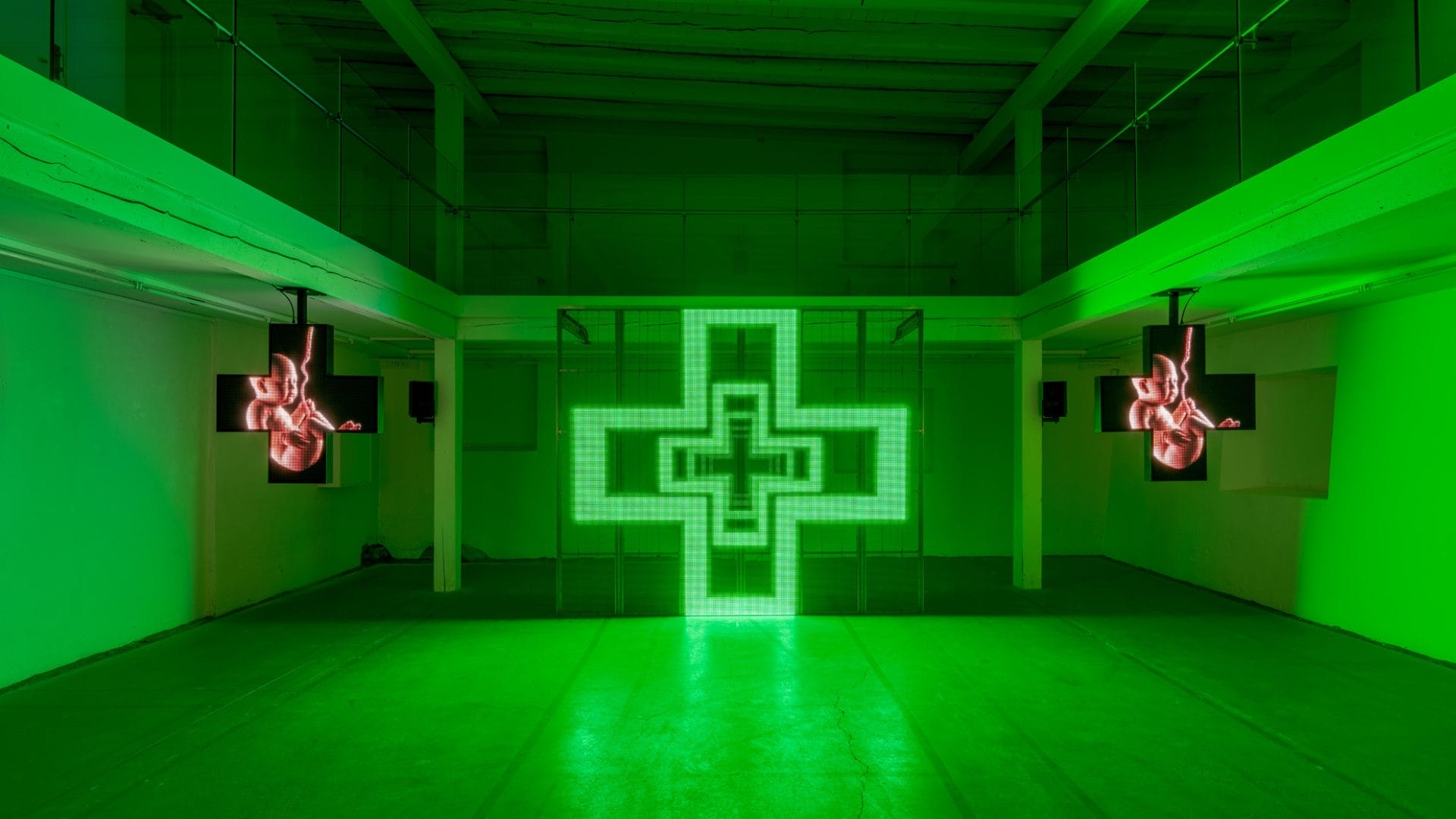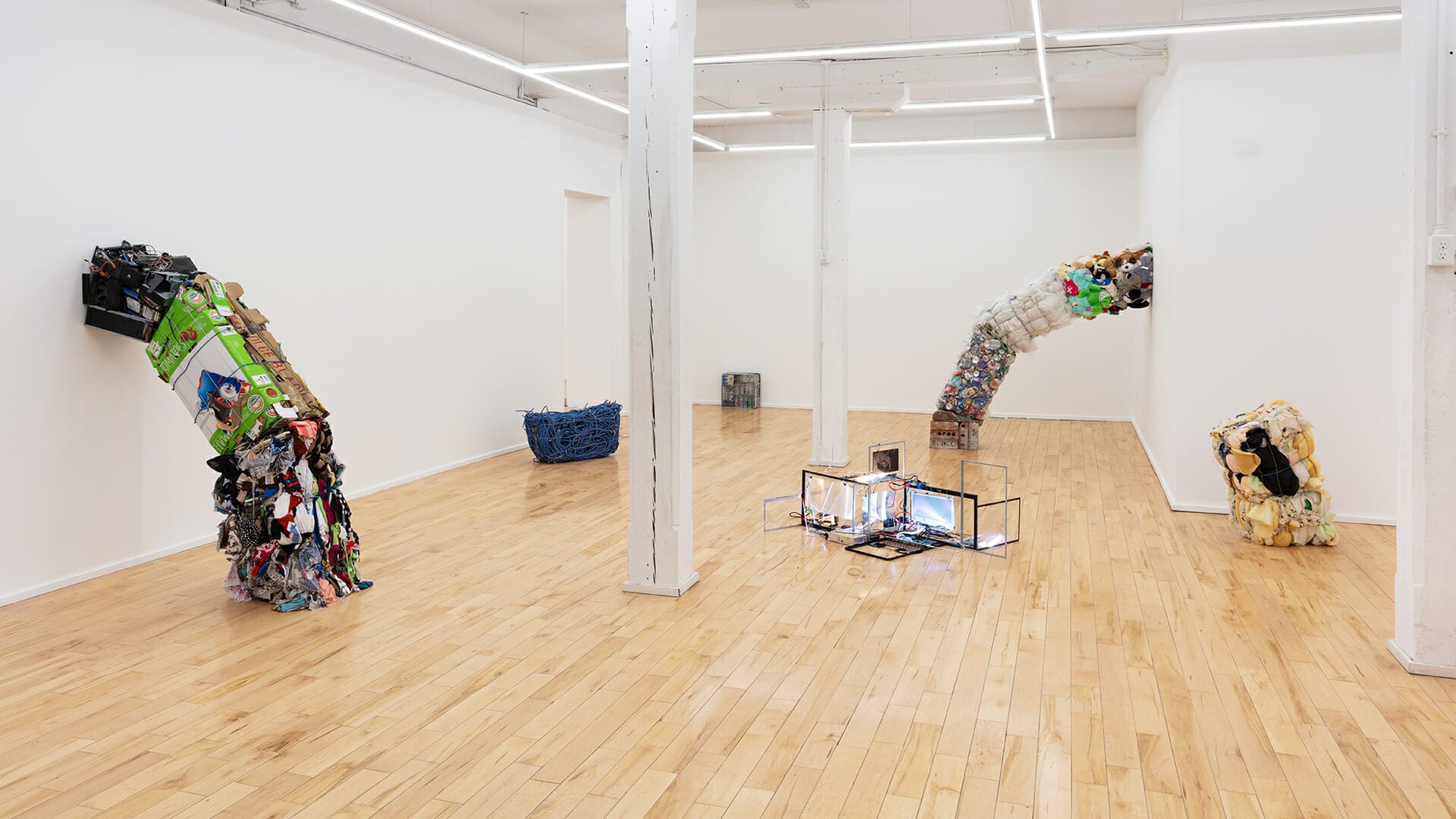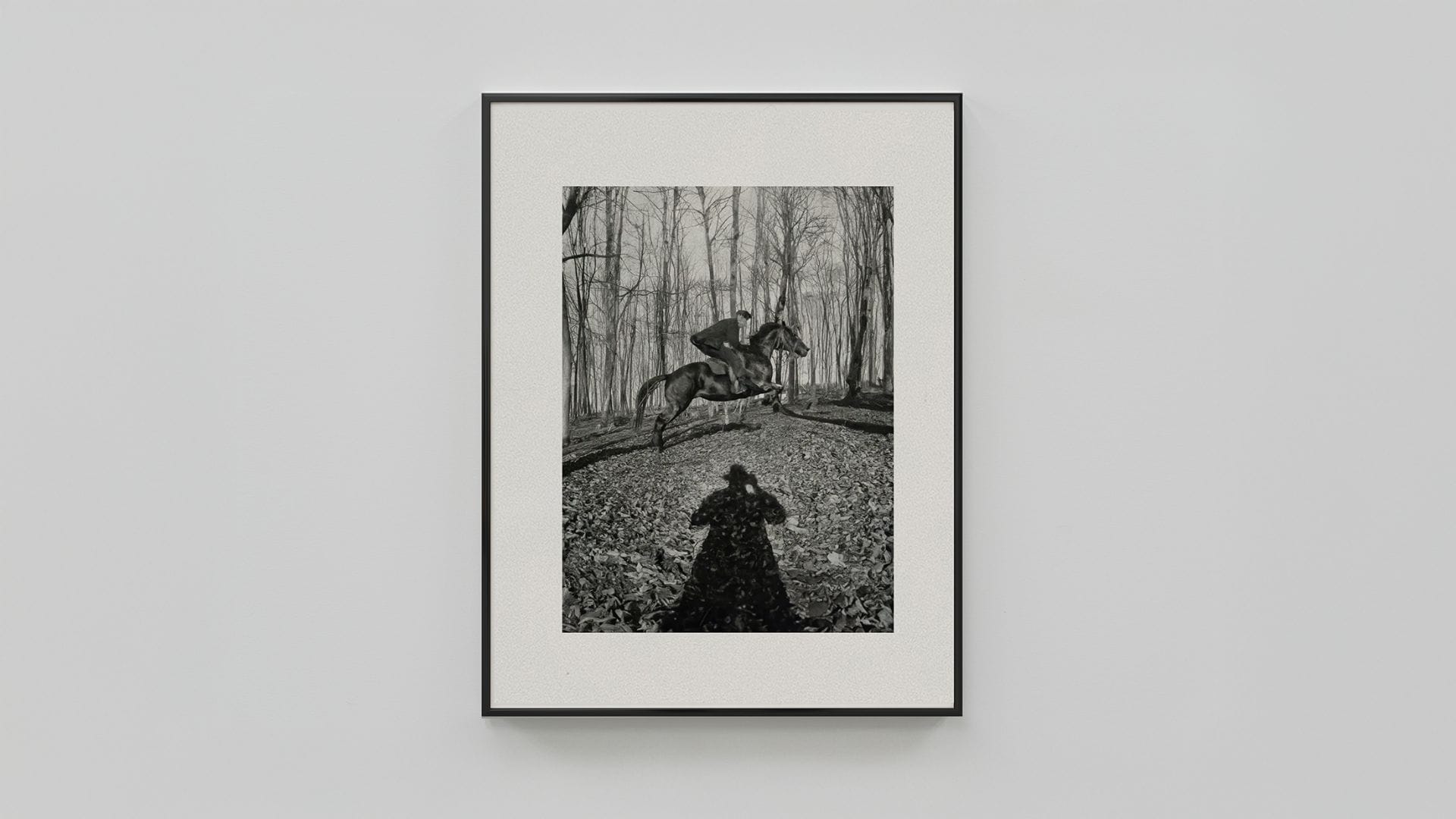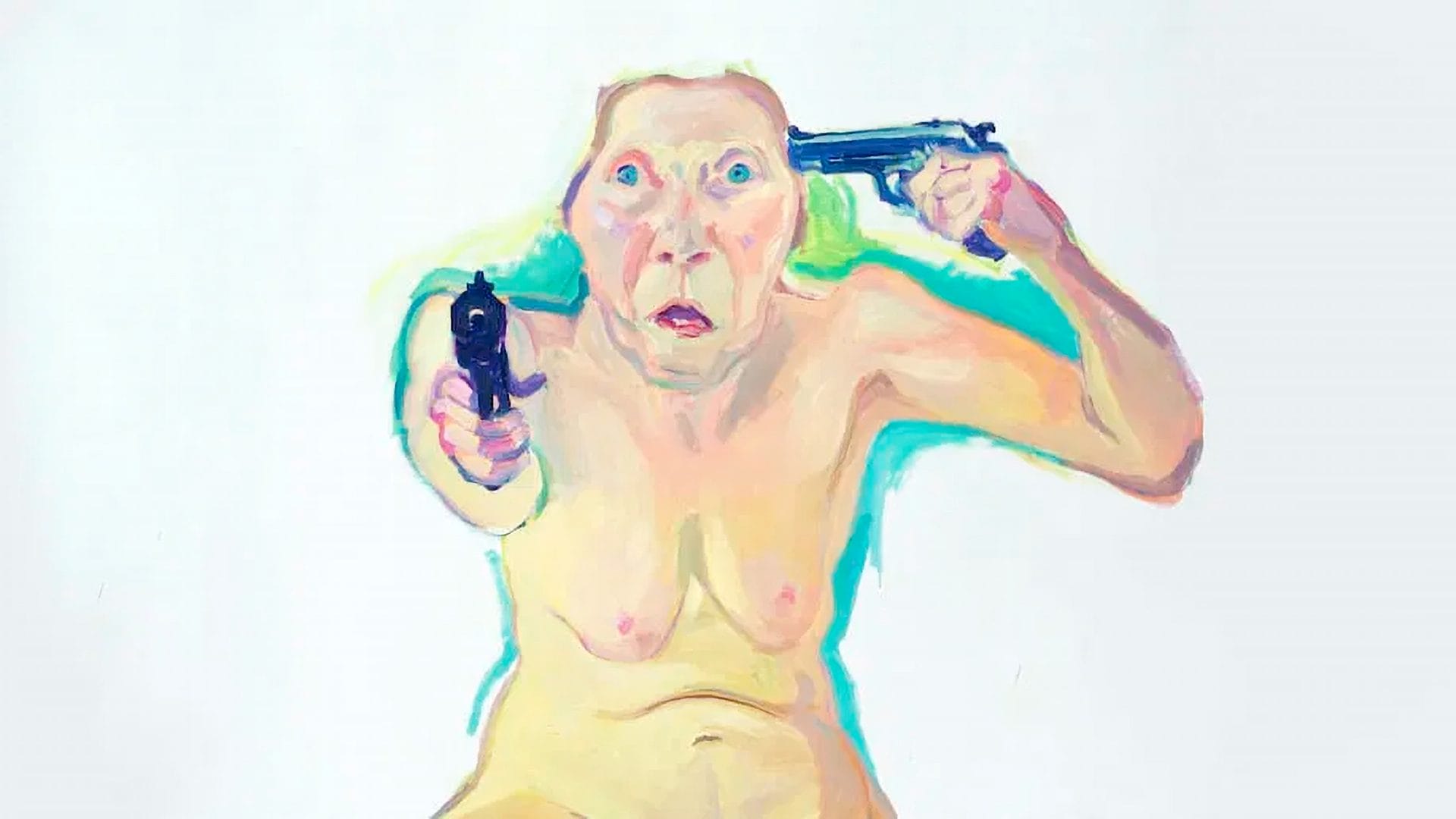
Maria Lassnig: painting the body from the inside out
Maria Lassnig‘s story begins in the picturesque region of Carinthia, Austria, where she was born in 1919. From an early age, Lassnig showed a profound interest in art, particularly drawn to exploring the human figure through her sketches and drawings. This early passion set the foundation for what would become a lifelong journey in art.
Lassnig’s formal education in art began at the prestigious Vienna Fine Arts Academy. Here, she encountered a traditional art scene that she found constricting, hinting at her future as an artist who would continually push boundaries. Lassnig’s time at the academy was a crucial period, providing her with fundamental skills and exposing her to a range of artistic influences. However, it also solidified her belief in the need for artistic freedom and exploration beyond conventional confines.
In these formative years, Lassnig began to develop her unique perspective on art, one that would later become central to her work. Her focus on the human figure was not just about representation but also about expression and sensation. This early exploration laid the groundwork for her later development of ‘Körperbewusstseinsmalerei’ or ‘body awareness painting,’ a concept that would become synonymous with her name.
Lassnig’s early work, while rooted in traditional techniques, already showed signs of her later innovative style. Her drawings and paintings from this period, while less known than her later work, are essential for understanding the evolution of her artistic vision. They reflect a growing interest in the subjective experience of the body, a theme that would become central to her art.

The Paris and New York Years: Expansion of Artistic Horizons
In 1960, Maria Lassnig embarked on a transformative journey, moving to Paris, a city renowned for its vibrant and avant-garde art scene. This decision marked a significant turning point in her career, exposing her to a milieu radically different from the conservative art environment in Austria. Paris in the 1960s was a melting pot of artistic ideas and movements, and Lassnig immersed herself in this eclectic and dynamic world, absorbing influences that would significantly shape her work.
During her time in Paris, Lassnig engaged with a wide array of contemporary art movements. The city’s artistic landscape was bustling with new forms of expression and experimentation, offering her a wealth of inspiration. It was here that Lassnig’s exploration of the human form began to deepen, influenced by the myriad artistic approaches around her.
In 1968, Lassnig made another bold move, relocating to New York City. This period was a crucial phase in her artistic development. New York’s art scene, characterized by its diversity and innovation, provided Lassnig with a fresh and stimulating environment. Here, she was exposed to the burgeoning movements of pop art, minimalism, and conceptual art, which contrasted with and enriched her own focus on the human form and internal experience.
Lassnig’s New York years were not just about artistic growth; they also entailed personal challenges and struggles. Despite the city’s vibrant art scene, Lassnig found it difficult to gain recognition in a male-dominated environment. However, these challenges did not deter her; instead, they fueled her commitment to her unique vision and artistic integrity.
It was during this period that Lassnig began to articulate and refine her concept of ‘Körperbewusstseinsmalerei’ or ‘body awareness painting’. This innovative approach involved a radical shift in how the human body was represented in art. Lassnig sought to depict the body not as it appears externally, but as it is experienced internally. This introspective method led to groundbreaking works where the body was portrayed in fragmented, distorted, or abstracted forms, reflecting her internal sensations and emotions.
While in New York, Lassnig also experimented with film, a medium that allowed her to further explore themes of body awareness and self-perception. Her films from this period are remarkable for their blend of animation, personal narrative, and political commentary, adding a new dimension to her artistic repertoire.
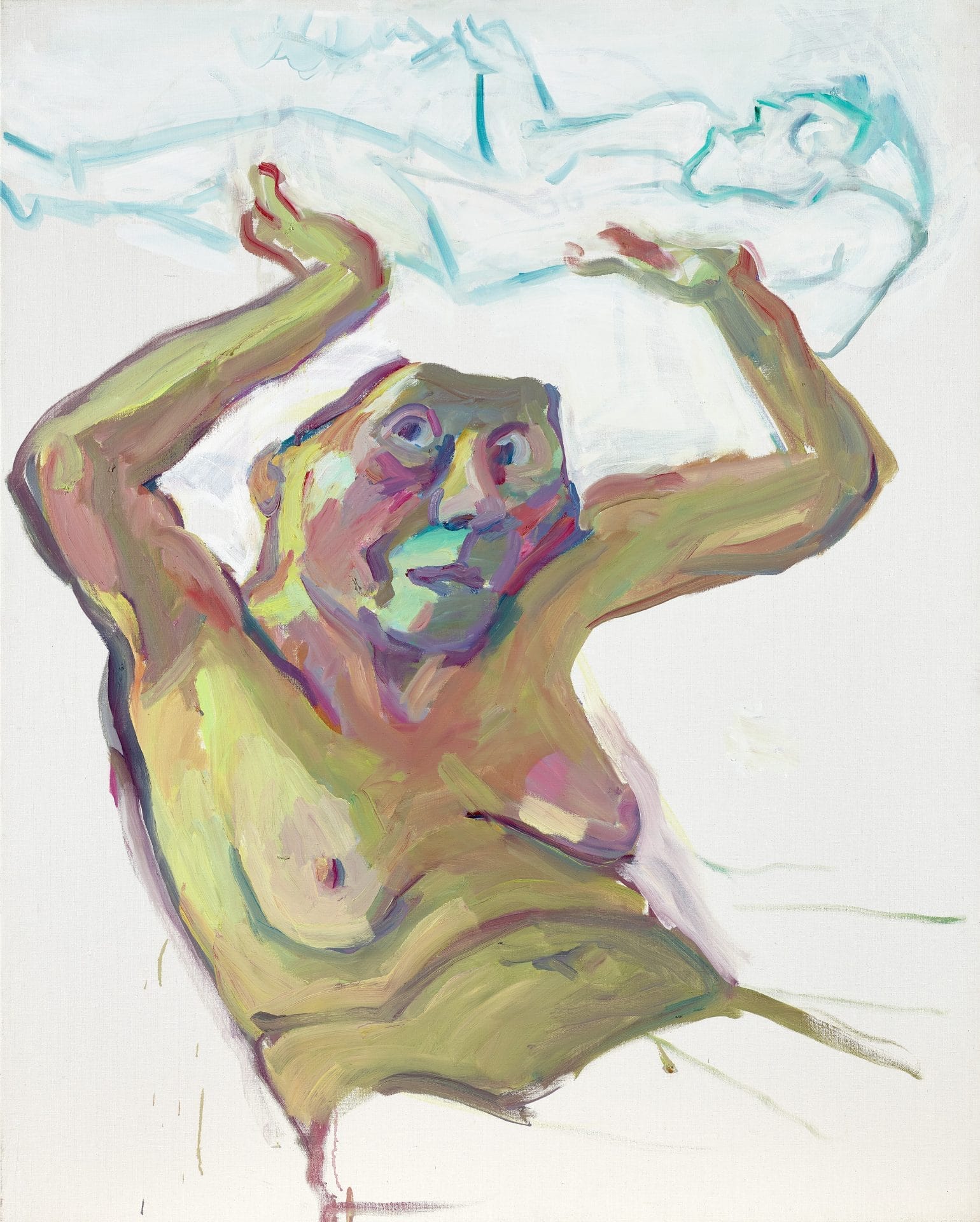
The Concept of ‘Körperbewusstseinsmalerei’: Lassnig’s Unique Vision
Maria Lassnig’s artistic innovation is most profoundly encapsulated in her development of ‘Körperbewusstseinsmalerei,’ or ‘body awareness painting.’ This concept, which became the cornerstone of her work, marked a significant departure from traditional approaches to figure painting. It reflected not only Lassnig’s unique vision but also her deep introspective journey into the realm of bodily perception and emotional expression.
‘Körperbewusstseinsmalerei’ is grounded in the idea of painting the body from the inside out. Rather than depicting the external appearance of the figure, Lassnig focused on conveying how the body feels from within. This approach led her to explore a more subjective and sensory understanding of bodily existence. Her paintings, therefore, became maps of internal experience, where physical sensations and emotional states were visually articulated.
This radical approach to painting was both a philosophical and practical choice for Lassnig. Philosophically, it stemmed from her belief in the primacy of personal experience and the subjective nature of reality. Practically, it involved a method of working where Lassnig would paint only the parts of her body that she could physically feel at the moment of painting. As a result, her works often depicted fragmented or incomplete figures, with missing limbs or distorted forms, visually representing the fluctuating nature of bodily awareness.
Lassnig’s ‘body awareness paintings’ are characterized by their raw, visceral quality. She used color, form, and line to express a range of sensations and emotions – from discomfort and tension to fluidity and movement. Her paintings often evoke a sense of vulnerability, as they lay bare the intimate experiences of her physical existence.
This concept also allowed Lassnig to explore the psychological dimensions of self-portraiture. Through ‘Körperbewusstseinsmalerei,’ her self-portraits transcended mere physical likeness, delving into deeper layers of self-representation and introspection. These works became powerful expressions of her inner life, reflecting her struggles, fears, joys, and the myriad complexities of her identity.
Furthermore, Lassnig’s approach was a subtle yet profound commentary on the nature of representation in art. By focusing on internal perception, she challenged conventional notions of how bodies and identities are depicted, particularly in a culture that often prioritizes external appearances. Her work thus stands as a critical inquiry into the relationship between the self and the body, and the ways in which this relationship is mediated through art.
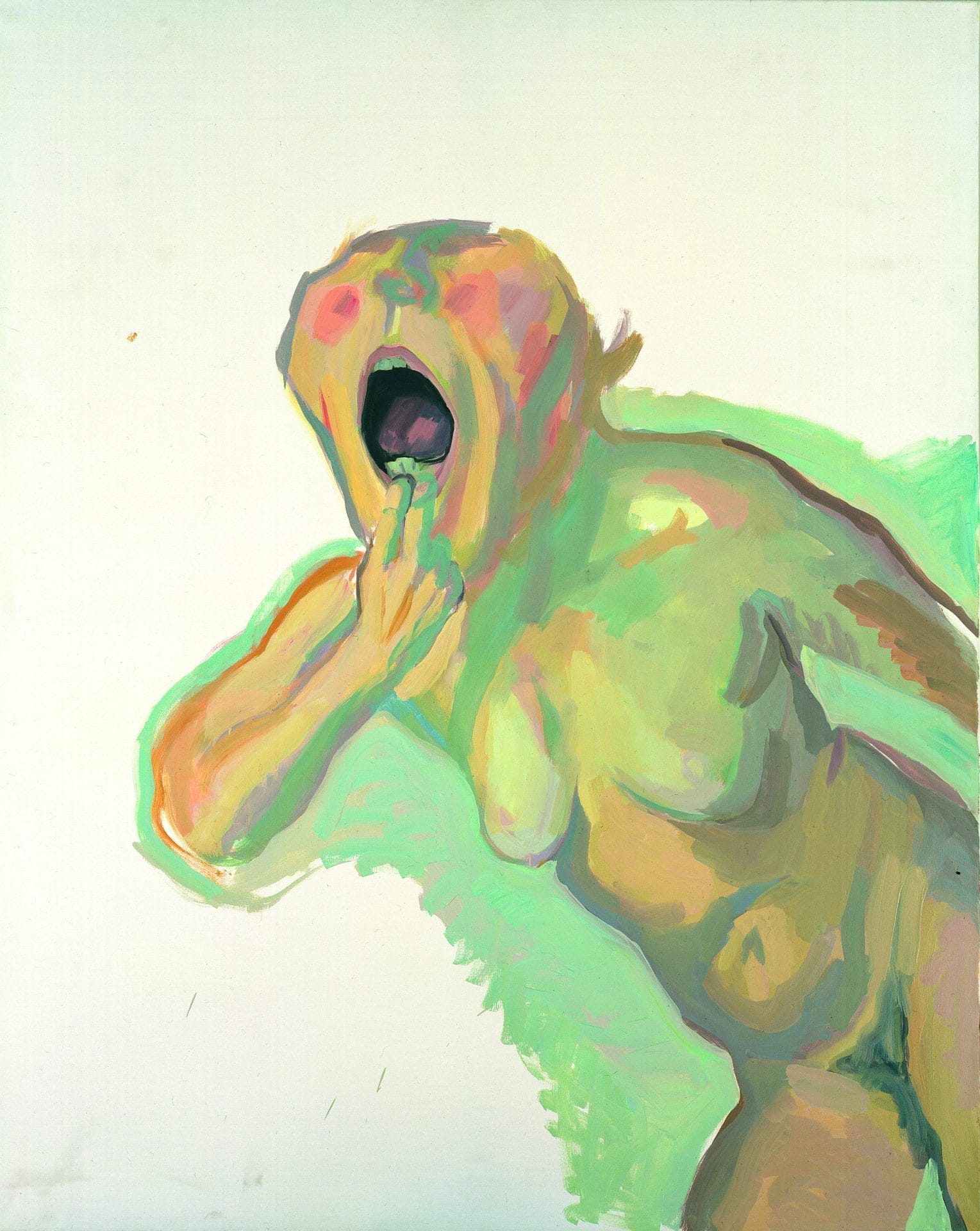
Returning to Austria: A New Chapter and Academic Influence
In 1980, after years of artistic exploration and development abroad, Maria Lassnig returned to her native Austria, marking a new chapter in her life and career. Her return was not just a homecoming but also a significant milestone in her professional journey, as she took on a groundbreaking role in the academic world.
Upon her return, Lassnig was appointed as a professor at the Vienna University of Applied Arts. This appointment was historic; she became the first female professor of painting in Austria, breaking a significant gender barrier in the academic art world. Her role as an educator had far-reaching impacts, not only on her own work but also on the generations of artists she mentored.
As a professor, Lassnig brought her unique perspective and rich experience to the academic setting. She was known for her unconventional teaching methods, which encouraged students to explore their individual artistic voices. Lassnig emphasized the importance of self-exploration, urging her students to delve into their personal experiences and perceptions as sources of artistic inspiration. This approach was in line with her own practice of ‘Körperbewusstseinsmalerei,’ and it helped foster a new wave of artists who were more introspective and expressive in their work.
Lassnig’s influence extended beyond painting to other forms of art. She also taught animation, a medium she had explored during her time in New York. Her knowledge and experience in film and animation enriched the curriculum, offering students a broader perspective on art and its possibilities.
During this period in Austria, Lassnig continued to develop her own art. Her return to her homeland brought new influences and perspectives to her work. The Austrian landscape, culture, and her own experiences of coming back to her roots began to permeate her paintings, adding new layers of meaning and depth.
Lassnig’s academic tenure was not just a job; it was an extension of her artistic mission. She used her position to challenge the status quo, advocate for greater representation and opportunities for women in the arts, and inspire a new generation of artists. Her impact as an educator was profound, and her legacy in this regard is seen in the success and influence of her students, many of whom went on to become significant figures in the art world.
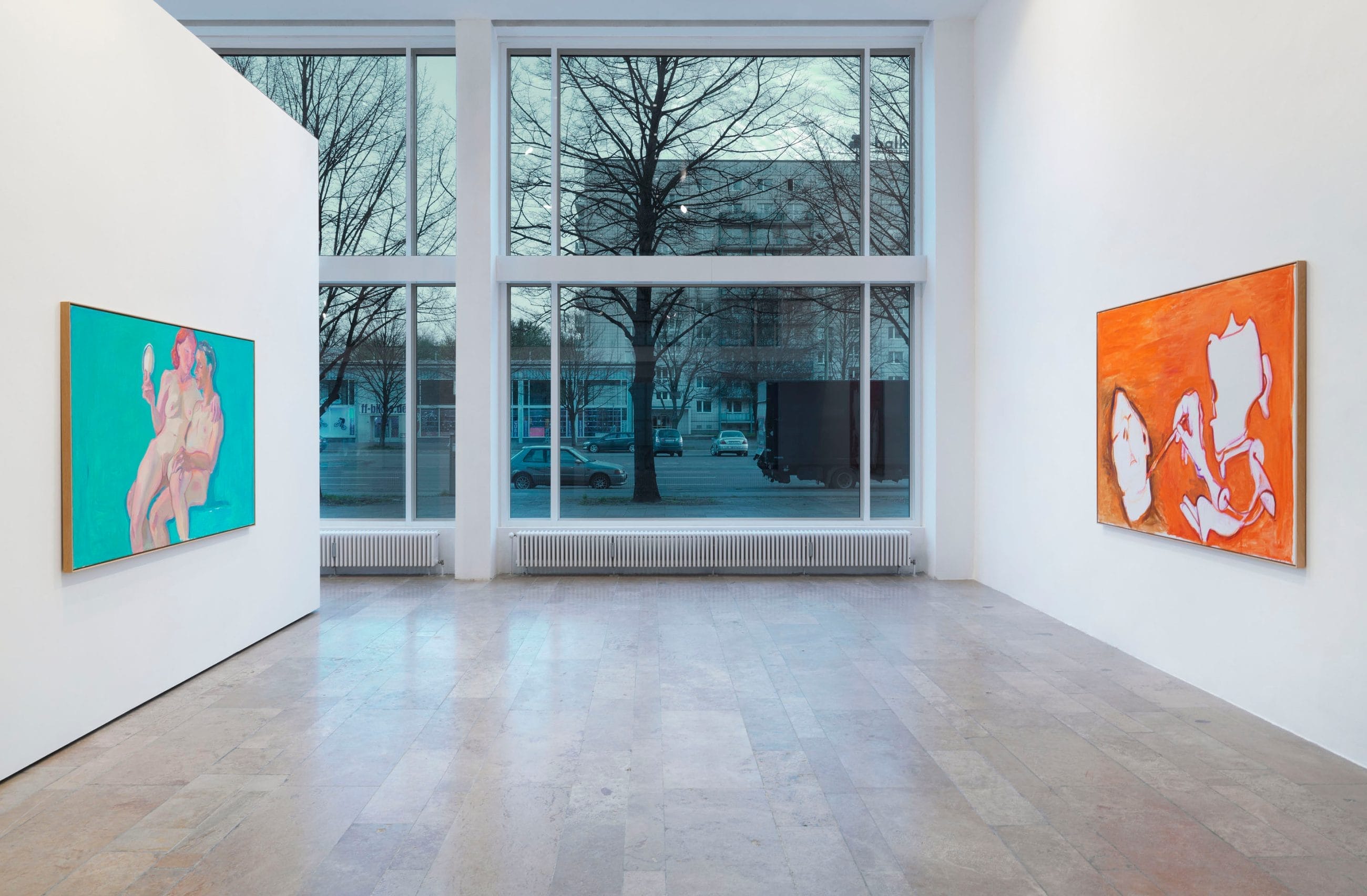
Accolades and Exhibitions
Maria Lassnig’s later years saw a long-overdue surge in recognition and appreciation for her groundbreaking work. This period was marked by numerous accolades and exhibitions, solidifying her status as a major figure in post-war painting.
One of the most significant recognitions came in 1988 when Lassnig was awarded the Grand Austrian State Prize. This prestigious award was a testament to her contributions to the Austrian and international art scenes. It acknowledged not only her artistic excellence but also her role as a pioneer in painting and as a trailblazer for women in the arts.
Another monumental moment in Lassnig’s career came in 2013, a year before her passing, when she was honored with the Golden Lion for Lifetime Achievement at the 55th Venice Biennale. This award was a powerful acknowledgment of her lifelong dedication to art and her influence on contemporary painting. The Venice Biennale, being one of the most important events in the art world, provided a significant platform for Lassnig’s work to be celebrated on an international stage.
Lassnig’s art was also the subject of numerous solo exhibitions across the globe. Prestigious institutions such as the Albertina Museum in Vienna, Deichtorhallen Hamburg, Kunsthaus Zurich, MoMA PS1 in New York, Museum Ludwig in Cologne, Serpentine Gallery in London, Stedelijk Museum in Amsterdam, and Vienna Secession hosted exhibitions showcasing her work. These exhibitions were crucial in bringing Lassnig’s art to a wider audience, allowing more people to experience the depth and intensity of her ‘body awareness paintings.’
Moreover, Lassnig represented Austria at the 1980 Venice Biennale alongside Valie Export, another significant artist. This representation was a moment of national and personal pride, further establishing her as a leading figure in Austrian art. Additionally, her participation in Documenta in Kassel, Germany, in 1982 and 1997, placed her in the context of the most cutting-edge and influential art of the time.
The exhibitions and accolades in her later years not only celebrated Lassnig’s past achievements but also highlighted the ongoing relevance and power of her work. Her exploration of the body, identity, and self-perception resonated deeply with contemporary audiences, particularly in times of increased focus on personal identity and the human condition.
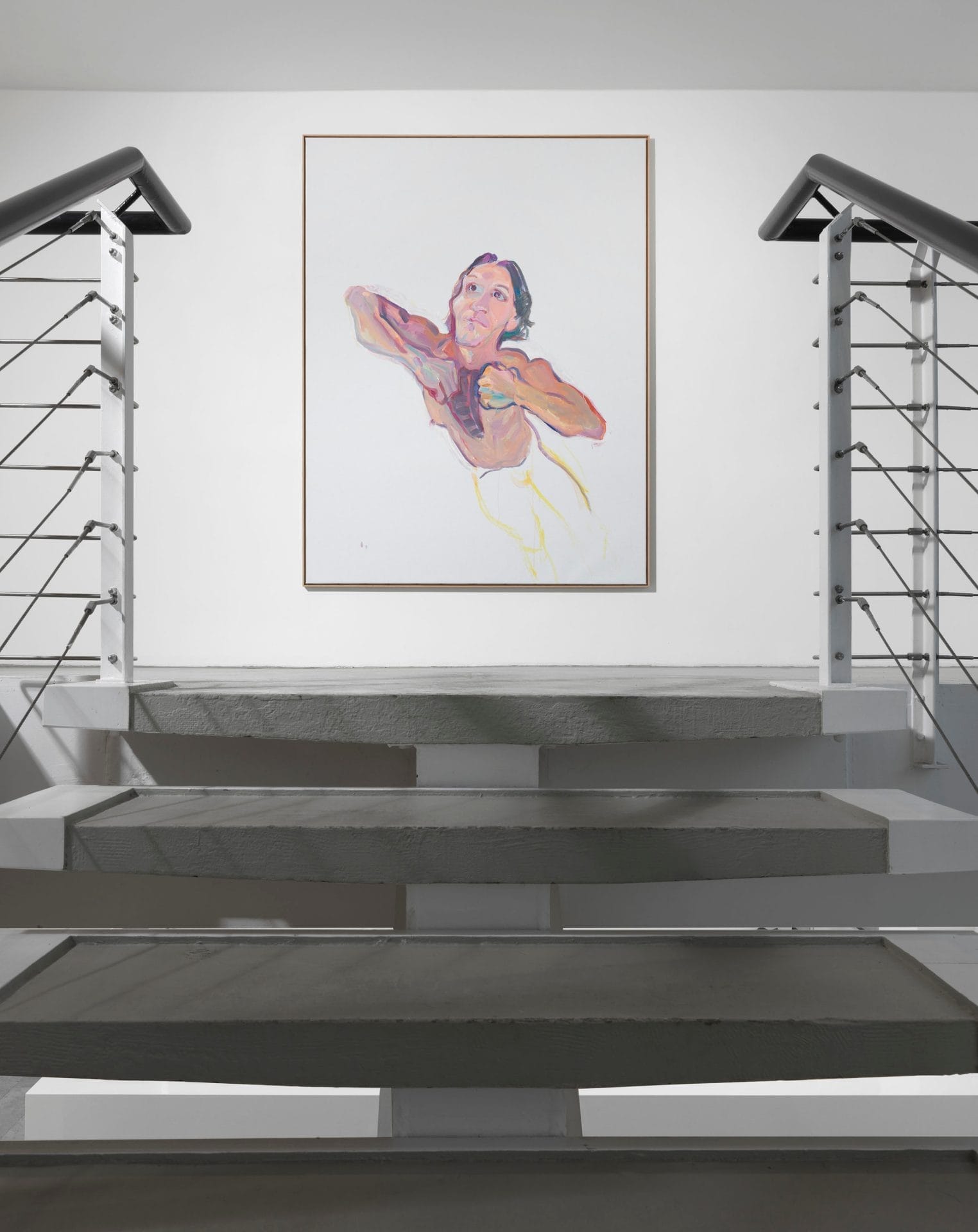
The Kunstmuseum Bonn Exhibition: A Deep Dive into Lassnig’s Work
The Kunstmuseum Bonn in Germany held a comprehensive monographic exhibition of Maria Lassnig’s work, showcasing nearly 40 pieces. This exhibition, held from February 10th to May 8th, 2022, offered a profound insight into the thematic focuses of Lassnig’s oeuvre, emphasizing the self-examination, bodily perception, and the presence of others in her work.
What set this exhibition apart was its innovative approach to engaging the audience with Lassnig’s concepts. The inclusion of Sacco chairs in the exhibition space was a thoughtful and interactive element. These formless chairs, designed to conform to the sitter’s body, encouraged visitors to reflect on their own physical presence. This setup was a physical manifestation of Lassnig’s philosophy of body awareness, allowing visitors to experience firsthand the sensation of their bodies shaping and interacting with an external object, paralleling how Lassnig’s own body influenced her art.
The exhibition highlighted Lassnig’s unique approach to image creation. She did not solely rely on visual perception through the eyes but considered her entire body as a tool and medium for artistic expression. This method resulted in works that viscerally conveyed bodily sensations in relation to themes like self-isolation and inadequacies in social communication. Her works, almost visionary in their execution, made visible our bodily sensations and their relationship to contemporary issues. This aspect of her art became particularly relevant in times of a pandemic, where experiences of isolation and introspection gained new significance.
Lassnig’s works in the exhibition were not just representations of physical sensations but also explorations of psychological and emotional states. Her paintings often depicted a deep sense of introspection and an acute awareness of the self in relation to the external world. The exhibition showcased how Lassnig’s work continued to resonate with contemporary audiences, offering insights into the human condition that were both personal and universal.
The Kunstmuseum Bonn exhibition was a significant event in terms of understanding and appreciating Maria Lassnig’s artistic legacy. It provided a comprehensive overview of her work, from her early explorations to her later, more mature pieces. The exhibition also underlined the contemporary relevance of her art, demonstrating how her exploration of bodily perception and self-awareness continues to speak to present-day experiences and societal issues.
In summary, the Kunstmuseum Bonn exhibition was a testament to Maria Lassnig’s enduring influence and relevance in contemporary art. It offered a deep dive into her artistic process, themes, and the lasting impact of her work, affirming her status as a pioneering figure in the exploration of bodily awareness and self-perception in art.

The American Museum Survey: Introducing Lassnig to the U.S.
The first U.S. museum survey of Maria Lassnig’s paintings and films was a landmark event, introducing the American audience to an artist who had long been an influential figure in European art. This exhibition, held at the Contemporary Arts Center in Cincinnati, was a revelation, showcasing an expansive selection of her work, most of which were completed between 2001 and 2007, along with all seven of her films.
Organized in association with the Serpentine Gallery in London and curated by Julia Peyton-Jones, Hans Ulrich Obrist, and Rebecca Morrill, the exhibition displayed almost 30 canvases. These works ruptured the austere aesthetic of the Zaha Hadid-designed galleries with their vivid and ungainly forms, offering a striking contrast and a testament to Lassnig’s bold and unconventional approach to art.
The survey not only displayed Lassnig’s paintings but also included all of her films, dating from 1971 to 1992. These films, with their simple animation and incisive political and social commentary, offered a more overtly didactic aspect of her work, contrasting with the more introspective nature of her paintings. The inclusion of these films provided a comprehensive overview of Lassnig’s artistic range and her ability to traverse different mediums to express her unique vision.
The exhibition’s installation, under the direction of Raphaela Platow, was informed by Platow’s extensive study and understanding of Lassnig’s work. This deep empathy and knowledge were evident in the nuanced presentation of the artworks, which facilitated a rich dialogue between Lassnig’s paintings and films.
A significant highlight of the exhibition was Lassnig’s engagement with her own history and identity. A videotaped interview with Lassnig, conducted by Obrist, provided personal insights into her life and artistic journey. She discussed her early encounters with art, her experiences in Paris and New York, and her return to Austria, offering a deeper understanding of the influences and motivations behind her work.
The exhibition also drew attention to Lassnig’s pioneering role as a female artist in a predominantly male art world. Despite being nearly two decades older than many of her contemporaries, her work maintained a fresh and dynamic quality, demonstrating her continuous evolution as an artist.
The U.S. museum survey was a significant milestone in Maria Lassnig’s career, as it broadened her recognition beyond European borders. It provided American audiences with a comprehensive understanding of her work, underscoring her importance in the landscape of contemporary art. The exhibition was not just a retrospective but a celebration of Lassnig’s enduring influence and her unique contribution to the art world.
The Influence of Surrealism and Art Informel
Maria Lassnig’s artistic journey was profoundly shaped by her encounters with various art movements, particularly Surrealism and Art Informel, which played significant roles in her development as an artist. These influences were especially pronounced during her time in Paris, a city that was a hub for these avant-garde movements.
Surrealism, with its emphasis on exploring the unconscious mind and dream-like imagery, offered Lassnig a new perspective on art. She was particularly drawn to the Surrealists’ exploration of the subconscious and their use of automatism, a method of creating art without conscious thought. This approach resonated with Lassnig’s interest in internal experiences and her desire to express the unseen aspects of the self. Her encounters with prominent Surrealists like André Breton and Benjamin Peret in Paris left a lasting impact on her work, evident in her use of bizarre, dream-like imagery and her exploration of the psyche.
Art Informel, another movement that flourished in post-World War II Europe, also influenced Lassnig. Characterized by its abstract and gestural style, Art Informel provided a counterpoint to the rigid structures of traditional art forms. Lassnig was inspired by this movement’s emphasis on spontaneity, materiality, and the physical act of painting. The movement’s focus on the tactile and expressive qualities of paint aligned with Lassnig’s interest in conveying bodily sensations and emotions through her art.
These influences are evident in Lassnig’s early works, where she experimented with abstract and symbolic forms. Her paintings from this period showcase a fluid amalgamation of surreal imagery and informal gestures, reflecting her engagement with these movements. This blend of influences allowed her to develop a unique visual language that combined the exploratory spirit of Surrealism and the expressive freedom of Art Informel.
Moreover, Lassnig’s engagement with these movements was not merely stylistic but also philosophical. Surrealism’s exploration of the unconscious and Art Informel’s emphasis on the materiality of painting complemented her own introspective approach to art. They provided her with conceptual frameworks to delve deeper into her exploration of the self and the body, themes that would become central to her work.
Lassnig’s Approach to Self-Portraiture
Maria Lassnig’s self-portraits stand as some of the most significant and revealing aspects of her oeuvre. Through them, she not only explored her own identity and physicality but also delved into broader existential and societal themes. Lassnig’s approach to self-portraiture was unique and pioneering, characterized by her unflinching honesty, humor, and profound introspection.
In her self-portraits, Lassnig often depicted herself in stark, unadorned ways, confronting the viewer with a directness that was both unsettling and captivating. These works are marked by a raw vulnerability, as Lassnig did not shy away from exposing her fears, aging, and the physical realities of her body. One of her most striking self-portraits, “You or Me” (2005), exemplifies this approach. In this painting, Lassnig presents herself naked, pointing a gun at her own head and another at the viewer, creating a powerful commentary on vulnerability, confrontation, and the artist-viewer relationship.
Lassnig’s self-portraits are also notable for their formal qualities. Her use of color, line, and form reflects her emotional and physical state at the time of painting. She often employed a vibrant palette and expressive brushstrokes to convey a range of emotions, from anguish to resilience. This expressive quality gave her self-portraits a dynamic and immediate feel, capturing the fluctuating nature of her internal experiences.
Furthermore, Lassnig’s self-portraits often feature missing or abstracted body parts, a reflection of her ‘body awareness’ philosophy. In these works, she depicted only the parts of her body that she could physically feel while painting. This resulted in fragmented and distorted representations, challenging traditional notions of bodily integrity and beauty. Her self-portraits thereby became a means of exploring the relationship between the physical body and the self, making visible the often-invisible sensations and emotions that shape our experience of being in the world.
Lassnig’s self-portraits also had a broader societal and feminist dimension. By portraying herself in ways that defied conventional standards of female beauty and decorum, she made a powerful statement against the objectification and idealization of women’s bodies in art and society. Her work opened up new possibilities for the representation of women’s experiences and bodies in art, paving the way for future generations of female artists.

Late Career: Evolving Styles and New Techniques
In the later stages of her career, Maria Lassnig’s art continued to evolve, showcasing her relentless pursuit of artistic exploration and her willingness to embrace new techniques and subjects. This period of her life was marked by a continuous refinement of her style and an openness to experimentation that kept her work fresh and relevant.
One significant development in Lassnig’s late career was her engagement with photography. In her early 80s, she began incorporating photographic references into her painting process, a departure from her usual method of relying solely on internal sensations. This shift allowed her to explore a new kind of realism, blending her ‘body awareness’ approach with elements of external observation. This fusion resulted in a series of compelling works that maintained the emotional intensity of her earlier paintings while introducing a new layer of visual complexity.
Lassnig’s late paintings often featured younger subjects, a contrast to her earlier focus on self-portraiture. These works displayed a continued interest in the human form but approached it from a different perspective. The inclusion of younger bodies in her paintings allowed Lassnig to explore themes of vitality, youth, and the passage of time, adding a new dimension to her exploration of the human condition.
Despite these new approaches, Lassnig’s late works remained deeply rooted in her core philosophical and artistic principles. Her paintings continued to explore the relationship between internal experience and external reality, the fluidity of identity, and the complex interplay between the self and the body. The emotional honesty and rawness that characterized her earlier works were still present, but they were now complemented by new techniques and perspectives.
Lassnig’s late career was also characterized by an increased recognition of her contributions to the art world. Her exhibitions during this period not only celebrated her past achievements but also highlighted the ongoing relevance and innovation of her work. This recognition was a testament to her enduring influence and the timeless quality of her artistic vision.
fakewhale
Founded in 2021, Fakewhale advocates the digital art market's evolution. Viewing NFT technology as a container for art, and leveraging the expansive scope of digital culture, Fakewhale strives to shape a new ecosystem in which art and technology become the starting point, rather than the final destination.
You may also like
Jens Settergren, Milk Plus at Viborg Kunsthal, Viborg
Milk Plus by Jens Settergren, curated by Bodil Monrad, at Viborg Kunsthal, Viborg. 19/09/2024 –
Adam Basanta in Conversation with Fakewhale
Introducing Adam Basanta Artist: Adam Basanta – Birthplace: Tel-Aviv, Israel, 1985 – Liv
Fakewhale’s ART MARKET Debuts on Foundation
Initially debuted on objkt.com as part of one of Fakewhale Gallery’s signature formats, on July 17

